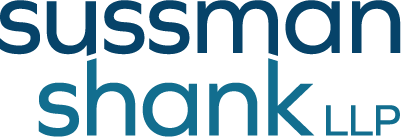Chapter 7 bankruptcy, often referred to as "liquidation," is a legal process that allows individuals to eliminate most of their unsecured debts and start fresh on their financial journey. While the process can be complicated and overwhelming, understanding the steps involved can help make the experience less daunting. In this blog post, we will break down the Chapter 7 bankruptcy process into manageable steps, providing you with a roadmap to a debt-free future.
1. Determine your eligibility
Before you can file for Chapter 7 bankruptcy, you must first determine if you are eligible. This typically involves passing a means test, which compares your income to the median income in your state. If your income is below the median, you are likely eligible for Chapter 7. If your income is above the median, you may still qualify, but you will need to complete additional forms to demonstrate your financial hardship.
2. Consult with a bankruptcy attorney
While it is possible to file for bankruptcy on your own, it is highly recommended that you consult with an experienced bankruptcy attorney. A knowledgeable attorney can help you navigate the complex legal process, ensure that you complete all necessary paperwork correctly, and provide guidance on the best course of action for your unique situation. Vanden Bos & Chapman, LLP is a trusted bankruptcy law firm in Portland, OR, that can help you demystify Chapter 7 bankruptcy and guide you toward a debt-free future.
3. Complete a credit counseling course
Before filing for bankruptcy, you must complete a credit counseling course from an approved provider. This course will help you understand your financial situation, explore alternative options to bankruptcy, and create a budget plan for your future. Upon completion, you will receive a certificate that you will need to include with your bankruptcy filing.
4. Prepare and file your bankruptcy petition
With the assistance of your attorney, you will need to prepare and file a bankruptcy petition with the court. This petition includes detailed information about your income, expenses, assets, debts, and other financial information. It is crucial to be thorough and accurate in your petition, as any discrepancies can lead to delays or even dismissal of your case.
5. Attend the 341 meeting of creditors
Approximately 30 days after filing your petition, you will be required to attend a meeting of creditors, also known as the 341 meeting. At this meeting, the bankruptcy trustee and any creditors who choose to attend can ask you questions about your financial situation and your bankruptcy filing. It is essential to be prepared and honest during this meeting, as it can have a significant impact on the outcome of your case.
6. Complete a debtor education course
Before your debts can be discharged, you must complete a debtor education course from an approved provider. This course will teach you essential financial management skills to help you avoid future financial problems. Like the credit counseling course, you will receive a certificate upon completion that must be filed with the court.
7. Receive your discharge
Once you have completed all of the above steps, the court will issue a discharge order, which eliminates most of your unsecured debts. This discharge typically occurs about 60-90 days after the 341 meeting, marking the end of your Chapter 7 bankruptcy process and the beginning of your fresh financial start.
At Vanden Bos & Chapman, LLP, our experienced bankruptcy attorneys are committed to helping you navigate the Chapter 7 bankruptcy process and achieve the debt-free future you deserve. Contact us today to schedule a consultation and take the first step toward a brighter financial future.

